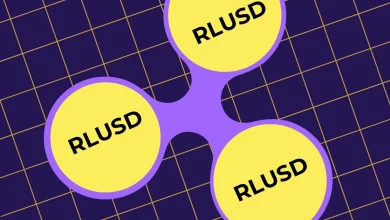
The digital landscape is evolving, and with it comes the inevitable rise of quantum computing. Quantum-resistant coins have emerged as a solution to tackle this future challenge, ensuring the security of digital assets in an era where traditional encryption might falter. Recently, Google’s announcement of its groundbreaking “Willow” chip highlighted the power of quantum technology. This chip can solve complex problems in just five minutes—tasks that would take classical supercomputers billions of years to complete.
While current crypto assets like Bitcoin and Ethereum remain secure for now, the rapid advancements in quantum technology pose a growing threat. Crypto investors are therefore looking beyond the usual suspects, exploring quantum-resistant coins as a viable safety net for the future.
Understanding Quantum-Resistant Cryptography
Quantum-resistant coins leverage advanced cryptographic techniques, such as one-time digital signatures, to maintain security even in the face of quantum computing advancements. These techniques function like robust locks that cannot be reused or easily breached, offering a long-term security solution for digital assets.
For those keen on investing in the future of secure cryptocurrencies, platforms like Altcoin Daily have compiled lists of these promising coins. Here, we explore some of the leading quantum-resistant coins offering peace of mind to investors.
Algorand (ALGO)
Leading the charge in quantum resistance is Algorand, which utilizes Falcon, a post-quantum digital signature technology. By cryptographically signing its blockchain history every 256 blocks, Algorand ensures that past transactions are secure against potential quantum threats. While future transactions are yet to be secured in this manner, safeguarding the chain’s history is a significant step towards preparing for the quantum era.
Cellframe (CELL)
Cellframe is a third-generation blockchain built from the ground up with quantum safety in mind. Its architecture supports post-quantum cryptography and includes features like multi-level sharding and hardware-friendly scalability. Written in pure C language, Cellframe stands out for its exceptional performance and ease of upgrade, making it an attractive option for developers focused on quantum-safe applications.
Hedera (HBAR)
Hedera Hashgraph employs SHA-384 cryptography, offering a level of security that is challenging even for the most powerful quantum computers. Its compliance with top-secret government standards adds an extra layer of assurance, ensuring the network remains secure as the quantum landscape evolves. Hedera’s growing ecosystem, featuring partnerships with major entities like Karate Combat and Ton FM, enhances its appeal among investors.
Bitcoin (BTC)
Despite the potential threats posed by quantum computing, Bitcoin is considered a long-term safe bet. While it will require algorithmic upgrades to maintain security, its robust network and adaptability make it a resilient choice. The primary risk lies in dormant wallets with lost keys; however, active wallets can transition seamlessly to quantum-resistant algorithms.
Quantum Resistant Ledger (QRL)
The Quantum Resistant Ledger (QRL) is specifically designed to combat quantum threats using the eXtended Merkle Signature Scheme (XMSS) for unparalleled security. It focuses on ensuring that all aspects of the blockchain—from transaction signatures to the ledger itself—are quantum-proof. This makes QRL a strong contender in the quest for secure digital transactions in the quantum era.






